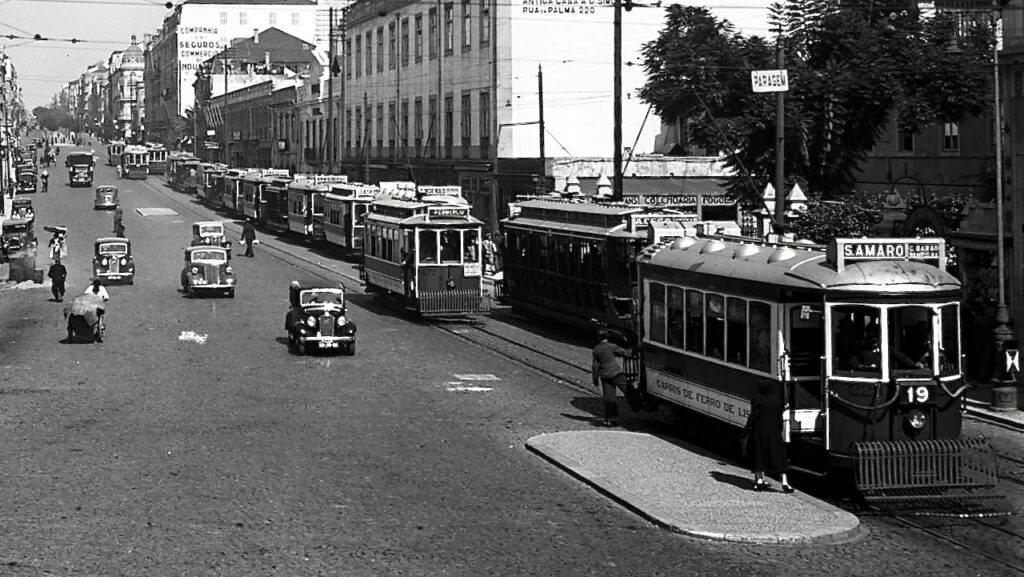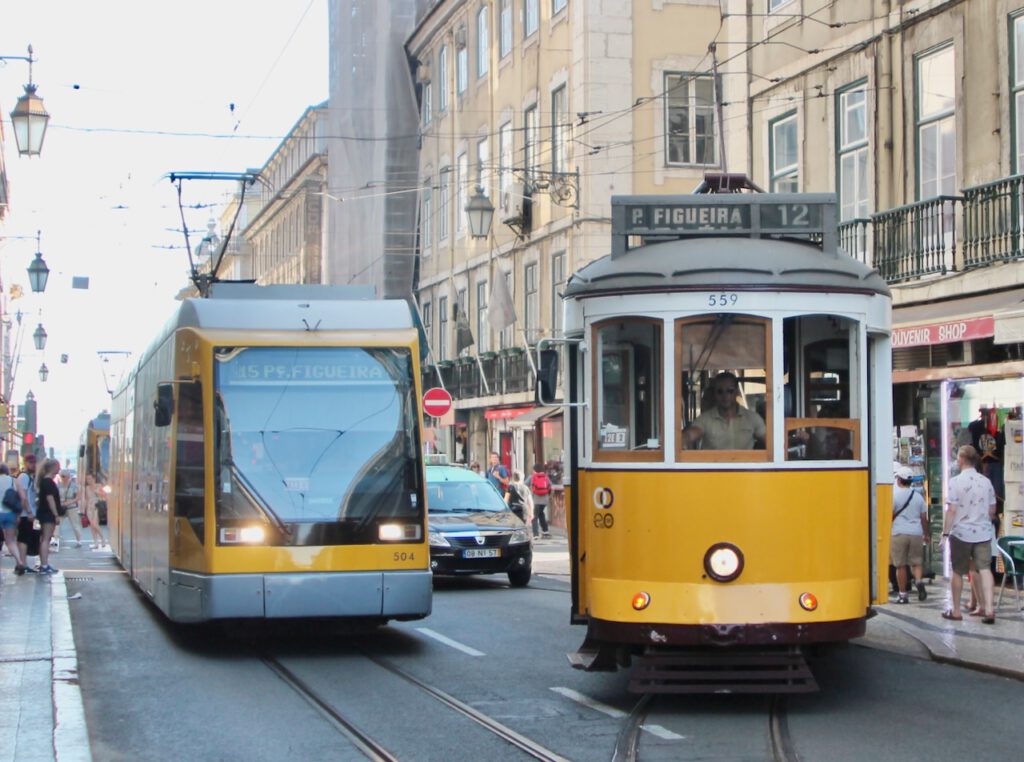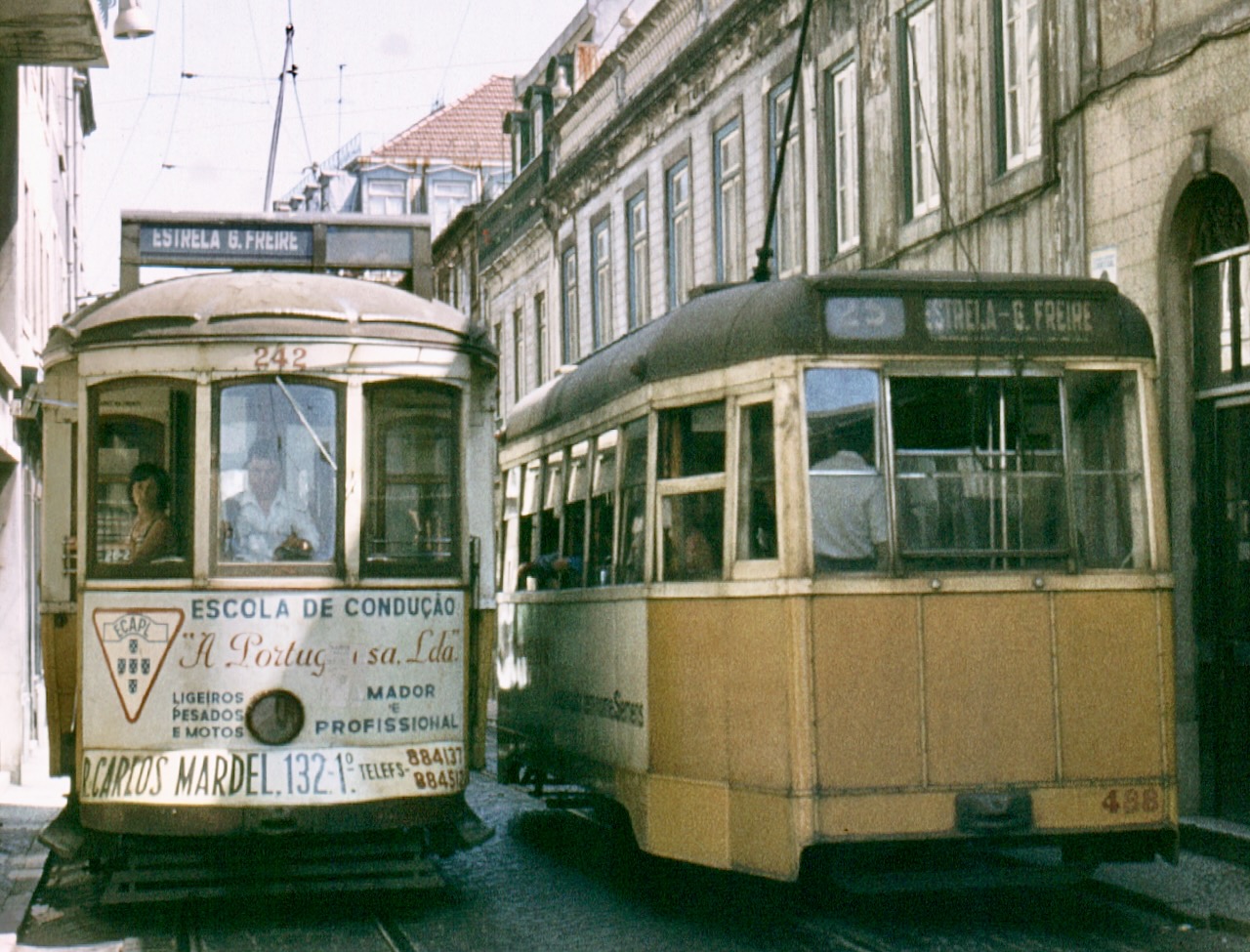From 1900 to 1914 the tram company Carris de Ferro de Lisboa imported trams from America in dismantled form and assembled them locally in the workshops. Since 1925 Carris built cars to its own design, using trucks and equipment purchased in Britain and reconditioned trucks and equipment of older cars. From 1947 to 1963 the new cars built were mostly to a simplified open-plan design and single-ended. Part of the cars built in the 1930’s were re-trucked and re-equipped from 1994 onwards (termed Remodelados) retaining the classic and highly popular small classic Lisboa tram in a modernised way. Low-floor modern articulated cars entered service from April 1995.
Lifeguards and liveries
All of the pre-1945 cars had Providence-type lifeguards, known locally as grelhas, and these lasted until about 1950. Replicas have been fitted to museum cars and red tourist cars. The early liveries are unknown, but if they were not yellow from the start, then the trams became soon yellow with white. That gave them their nickname “Amarelos”, from the Portuguese word for yellow. On old black and white photos the Lisboa tramcars look often very dark. This is caused by the at that time used orthochromatic emulsions, which were only little sensitive for yellow and red and turned those colours dark on the photo.

Class types
At first Carris classified the tram types with “Pequeno aberto” (Small open), “Pequeno fechado” (Small closed), Grande aberto (Large open), “Grande 4 motores” (Large 4 motors), “Grande 2 motores” (Large 2 motors) and “Carros do Povo” (2nd class). The indication “Grande” for large cars was later replaced by “Salão” (Saloon)
All new cars of the 1910’s and 1920’s and most of the 1930’s were closed and had two axles which put them all in the category “Pequeno fechado”.
In the 1930’s the “Pequeno aberto” cars disappeared and the term “Pequeno fechado” was replaced by “Ligeiro” (Lightweight). All two axle cars were part of this “Ligeiro” class. If useful in the context indications as “São Luís”, “Brill”, “Radiax” or “Estrela” could be used, but for the typical Lisboa tramcar that evolved in the late 1920’s and built in large numbers in the 1930’s, Carris never adopted an own class name. They were just “Ligeiros”. The same happened with the small tramcars built from the late 1940’s until early 1960’s. Those were classified “Ligeiros” too.
Historians like to classify the trams by model. For that reason the late J.H. Price introduced in the 1964 published first edition of “The Tramways of Portugal” the term “Standard” for the 2-axle trams built in the 1930´s as they were the most numerous of all types and known as the typical Lisboa tramcar. “Modern” was used in the same book for the post WWII cars. These terms were never internally used within the organisation of Carris itself.
By the mid 1990’s the post WWII cars were all withdrawn and for sure not modern anymore, which caused that instead these cars are now called “Caixote” (Box) by tram historians and enthusiasts. The advantage of these non-Carris terms is that they not only distinguish between the different types of “Ligeiros”, but also can be used for the “Salão” cars of similar design.
In the mid-1990’s a new class of small two axle trams was created by using old tramcar bodies of the 1930’s and new constructed trucks, motors and other equipment. These are called Remodelados. At the same time the last four axle trams were replaced by modern low floor trams called Articulados.



Leave a Reply